 In the late 19th Century, four settlements in Ward 10 of Imperial Calcasieu organized schools in what is now the Hathaway community: Grand Marais, Glen Roy, Nubbin Ridge and Raymond.
In the late 19th Century, four settlements in Ward 10 of Imperial Calcasieu organized schools in what is now the Hathaway community: Grand Marais, Glen Roy, Nubbin Ridge and Raymond.Schools of this period usually evolved from a private tutor hired by a family to a "master" or "governor" hired by several families that joined with other area families who then invited other children from surrounding homesteads. Then those same families petitioned the parish school board to sanction a school district.
The first area to organize a school was the Grand Marais settlement, about four miles north of Jennings on the Grand Marais. Other settlements in Hathaway were Glen Roy, about three miles east, northeast of the Grand Marais school. Six miles to the north, northwest of Glen Roy was Nubbin Ridge. And finally, about four miles to the west, southwest of Nubbin Ridge was Raymond. Each of these settlements built a school. School board policy was generally to try to consolidate school districts because maintaining many separate school houses was costly. Consolidation was disfavored by residents because consolidation meant longer travel for school children to and from school. In the early-20th Century, improved roads and automotive busing were still developing. This made the idea of consolidation unpopular, as indicated in a 1907 report by the Superintendent, John McNeese:
Concerning consolidation, have little definiteA special tax of 3 mill was first charged in 1911 by the Police Jury of Imperial Calcasieu in Ward 10, which was where those who lived in what would become the Hathaway area was located. After the Louisiana General Assembly voted unanimously on Act No.7 in 1912, Imperial Calcasieu parish was divided into four, and Jefferson Davis Parish was created. The rural schools of Imperial Calcasieu's Ward 10 then became a part of Ward 3 in Jefferson Davis Parish.
results to report, owing to the scattered
settlements, bad roads and a general prejudice
against giving up the local schools. Have
established transfer routes to two center
ward schools for which three wagonettes will
be used. Have arranged for its establishment
in their other districts, but shall not get them
to work before next year, 1907. In connection
with this shall say as our country is not old in
sense that it has been settled a long time, public
highways are very poor and little attention has
been given them, so to bring about consolidation
we have to start with the road first and work
back to our main purpose. The members of the
Police Jury, seeing the relation between road
building and school building have appropriated
45,000.00 to be spent on the road and
schoolhouses of the parish. In the wards where
there is already a road tax, this will materially
assist in repairing and refurnishing schoolhouses.
It will be our work to have the road leading to the
school houses repaired first.
The first school on the present site of Hathaway High School was a one-room school house built in 1914 for junior high-aged children. The Jefferson Davis Parish School Board originally planned to consolidate the area schools at this central location. However, efforts to keep younger children closer to home were successful and children in the 5th Grade or below attended the area one-room school houses. The first school on what is now the campus of Hathaway High School closed because of poor attendance and lack of funding. Children above the 5th Grade, then had find transportation to or board in Jennings to go to school at Central. While it was in operation, Mrs. Effie Compton Talley, who also attended that school around 1923, recalls the school suited a girl’s basketball team that wore black skirts below the knee and black socks with gold stripes (below--guessing Ms. Talley is second from left in front). In those days it was considered impolite for girls to show their legs. They played on a dirt court behind the school and if it rained on game day and the other team showed, they used burlap sacks to sop up the rain and played anyway. The school also boasted a “domestic sciences” course.
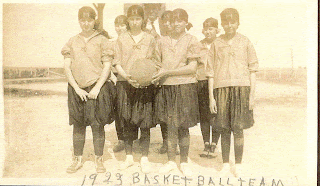
In 1928, Huey P. Long was elected Governor of Louisiana. His campaign promises included free textbooks and busing for all school children, improved roads, and a school for every community. Before Long, parents were responsible for buying their child's textbooks. Often, children without textbooks were sent home. The education initiatives of Huey Long ensured all children could attend school without financial obstacle.

With the advent of Henry Ford's assembly line in 1913, automobiles lost their luxury status and were more commonplace. By the end of the 1920's the automobile had replaced horses as the major mode of transportation. However, much of rural Louisiana could not accommodate efficient travel by automobile. The roads through Hathaway were no exception. The following is a quote from http://www.hueylong.com/ that explains the condition of Louisiana's road system in the late-1920's and early-1930's:
Huey Long's roadsurfacing plan (circa 1934) included a highway that would connect U.S. Highway 90 (through Jennings) and U.S. Highway 190 (through Elton). That road would come closer to reality on May 4, 1936 when the Jeff Davis Parish School board sold the Louisiana Highway Commission a right-of-way for the "Jennings-North" highway, which was then designated as Highway 25. The road previously connecting Jennings with Elton ran through Raymond.In 1928, Louisiana had roughly 300 miles of paved roads, only 60 miles of which were maintained by the state. Most ‘highways’ linking major towns were rutted, winding dirt roads that turned to thick mud in the state’s frequent rains. Farmers struggled to get their crops to market, and it was common to wait days to travel until the roads dried out. Cars often became stuck in the mud, and it was common practice for travelers to prevail upon local farmers to pull their cars out with a team of horses or oxen.
The Long administration implemented an ambitious road-building program that employed 10 percent of the nation’s highway workers. By 1932, the state had 5,000 miles of new paved and gravel roads. Four years later, there were 9,700 miles of new roads and 111 bridges, doubling the size of the state's highway system.

The Official Road Map of Louisiana showed Highway 25 still yet to be improved by the state. It did show that the parish had improved several roads in the area though. Those highways originated in Raymond. One ran west from Raymond to Pine Island. Another ran north from Raymond to Elton. The other ran from Pine Island Road to Roanoke. These improved roads were not the only roads in the Hathaway area, but after a rain storm, they were probably the only passable by car in 1939.
In the 1890's and early-1900's, school districts paid local farmers to drive wagonettes, sometimes covered, sometimes not, to drive a route to pick up school children who lived too far, were too young, or just did not want to walk. Calcasieu Parish and then Jefferson Davis Parish had a several wagonettes in the early-1900’s, serving the surrounding communities of Jennings, Elton, Fenton, and Roanoke.
Hathaway never had horse-drawn wagonettes as school buses supplied by the parish. But it is safe to assume parents or older kids drove a wagon to school and picked up other kids along the way. It was not until the late-1920's, when two motorized school buses were provided by the parish for Hathaway schools. At that time, Hathaway, Crochet, and Grand Marais were the schools open in Hathaway. In the late-1920’s, early-1930’s, Mr. John Folkland and Mr. John Labouve, the first bus drivers in Hathaway, drove Model-T chassis, open-aire buses with wooden frames, canvas canopies and sunshades. The photo below is an example (i.e., not Hathaway) of a school bus from the late-1920's/early-1930's.
By 1940, Hathaway had four steel-framed school buses with windows, much like the bus in the photo below. With motorized buses, pavement to drive on, and free textbooks, the stage was set for consolidation.  Consolidation was favored by the parish because maintaining many separate structures was costly. As noted in the quote from John McNeese's 1906-07 report, above, roads would make consolidation from one-room school houses to a centralized school an easier sell. But consolidation did not occur until twenty-five years after Jefferson Davis Parish was split from Calcasieu Parish. As Mr. McNeese predicted, after roads were improved, consolidation soon followed. In 1938, less than two years after what was then Highway 25 (now Highway 26) was improved, the four one-room school houses serving the rural communities in Ward III of Jefferson Davis Parish were centralized to the current location of Hathaway High School.
Consolidation was favored by the parish because maintaining many separate structures was costly. As noted in the quote from John McNeese's 1906-07 report, above, roads would make consolidation from one-room school houses to a centralized school an easier sell. But consolidation did not occur until twenty-five years after Jefferson Davis Parish was split from Calcasieu Parish. As Mr. McNeese predicted, after roads were improved, consolidation soon followed. In 1938, less than two years after what was then Highway 25 (now Highway 26) was improved, the four one-room school houses serving the rural communities in Ward III of Jefferson Davis Parish were centralized to the current location of Hathaway High School.
http://library.mcneese.edu/depts/archive/FTBooks/richard.htm
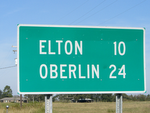
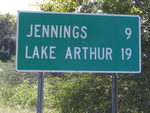
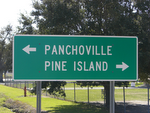
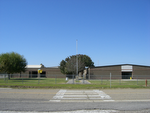
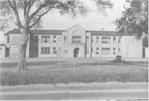
No comments:
Post a Comment